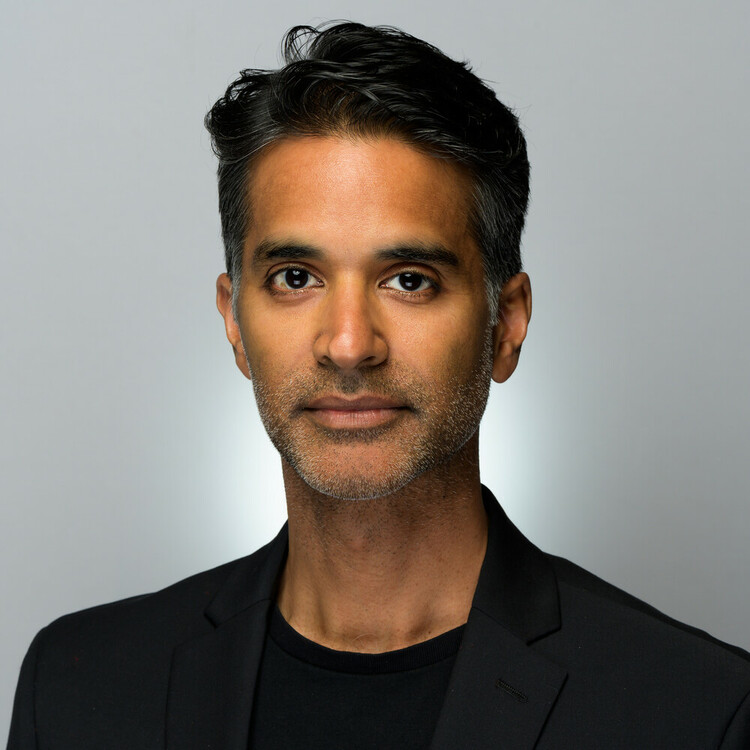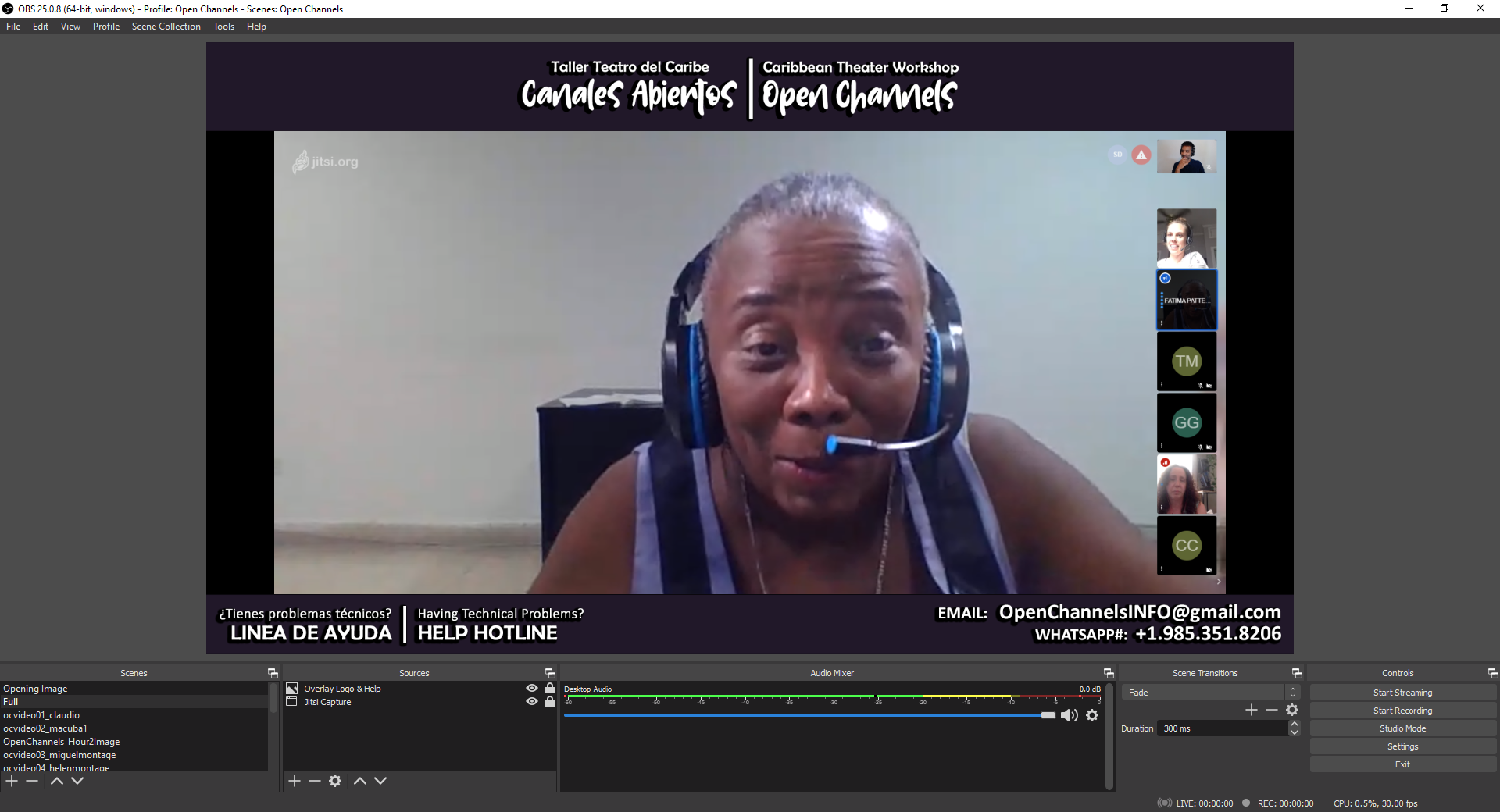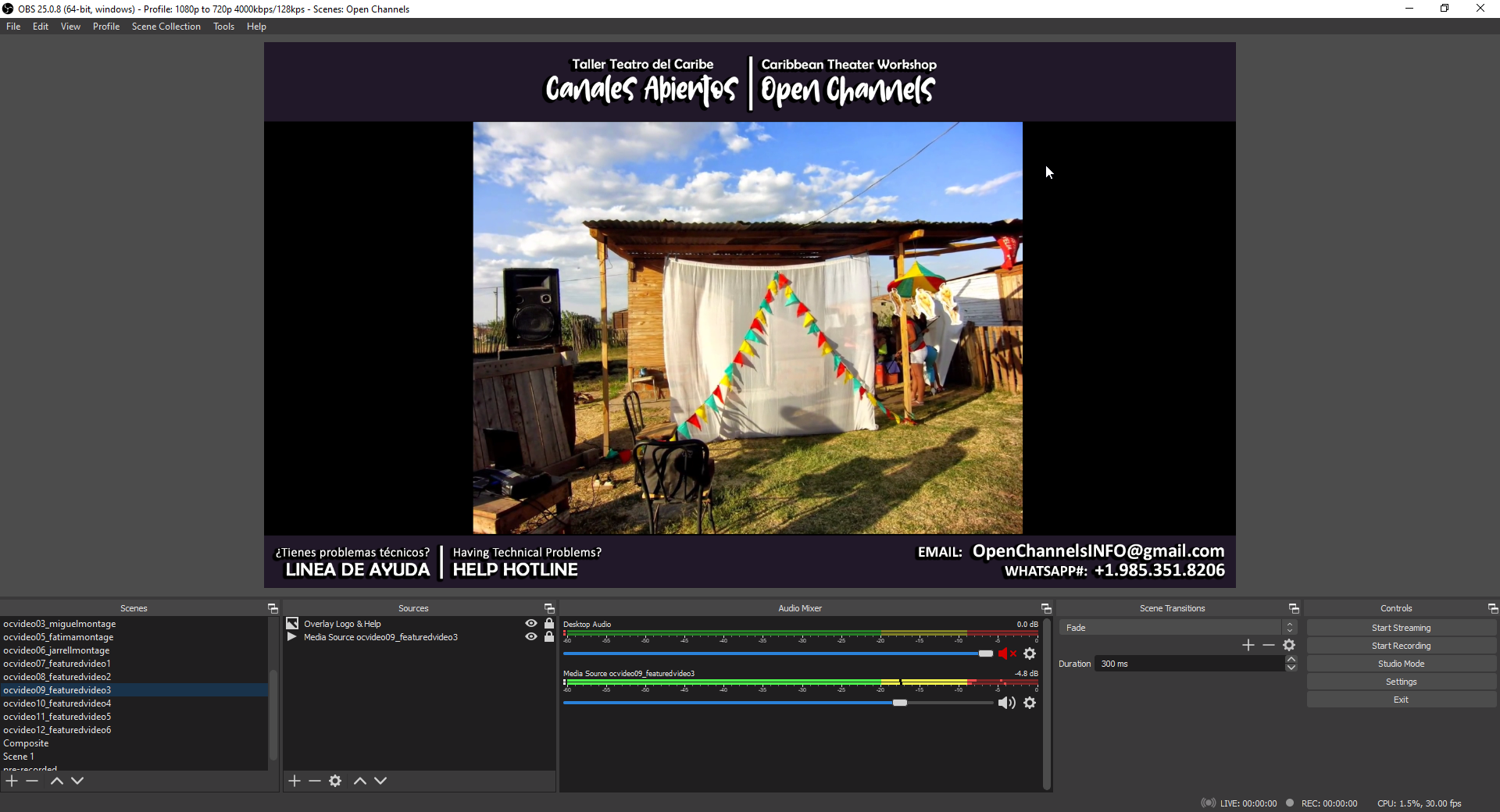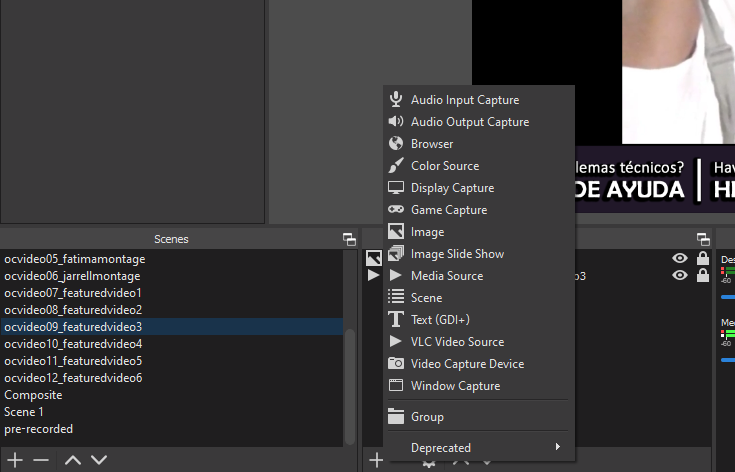The ability to create professional broadcast programming similar to what is seen on television has finally been democratized thanks to the countercultural dynamics of commons-based peer production. An excellent example of this alternative economic and cultural model—which is frequently embodied as open-source software development—is OBS Studio. OBS Studio is software created by a large and passionate community of volunteer creative technologists and it enables anyone to create broadcasts, which have the potential to rival traditional corporate broadcasting in terms of production value—and accomplish all of this for free.
The paradigm of an open-source project opposes artificial scarcity, centers value-creation that’s available freely to all, and thrives on collectivism and community stewardship. It is commoning in action. Hopefully, this ethos will emerge into the mainstream for nonprofit arts and cultural sectors grappling with their own purpose and relevance in this moment of severe challenges and the possible futures they want to help create.
In my first post “How to Produce a Livestreamed Event,” I focused on how to produce a basic livestream using the Zoom video conference platform, the importance of prioritizing accessibility and inclusion in the design of a livestreaming event, and why the free and open-source video conference platform Jitsi Meet is a good alternative to Zoom for financial reasons and/or ethical and pro-social reasons.
For those producers who wish to increase the production quality and creative possibilities of their livestream event design beyond Zoom and Jitsi Meet’s built-in livestream capabilities, this part 2 will present a brief overview of how to use OBS Studio. OBS allows users to compose a broadcast program with multiple video, image, and audio sources, and then switch between them for different looks during a live broadcast. It is basically a “video mixer” or video switcher that can bring in a video conference like Zoom or Jitsi Meet, bring in still images, bring in pre-recorded video—and offer tools to help compose a final public broadcast.
For example, if you are livestreaming an event that includes a live Jitsi Meet video call and also shows pre-recorded video of an artist’s performance, you can cut between these two original sources, essentially editing live for the benefit of the online audience that sees the final editing decisions at a livestream destination such as YouTube or Facebook. In addition, you can create specific visual looks, like displaying graphics, to communicate additional information, such as where to send in questions.
The paradigm of an open-source project opposes artificial scarcity, centers value-creation that’s available freely to all, and thrives on collectivism and community stewardship. It is commoning in action.
When Not to Use OBS Studio
If your remote, physically distant video conference event wants to be a “town hall” type of meeting, where you would like many people to see and hear and connect with each other in real time but would additionally like to livestream to people who are not present inside the video conference, you can use the built-in feature that Jitsi Meet has for livestreaming to YouTube Live, or the built-in feature that Zoom Pro has for livestreaming to YouTube Live and Facebook Live. (See this workflow in the part 1 post.) In this case, you don’t necessarily need OBS Studio. If you want to show pre-recorded video at this event, you would use the screenshare feature that both Jitsi Meet and Zoom have built into their applications.
The disadvantage is that the quality of the pre-recorded video will not be as good in a screenshare compared to using OBS Studio to broadcast a pre-recorded video file. But for many events where the visual presence and immediacy of video conference participants is important, this minor tradeoff in the quality is perfectly acceptable.
When to Use OBS Studio
OBS Studio is best used for presentational broadcast-type events where most, if not all, of your audiences are experiencing the live event by watching YouTube, Facebook, or other livestream destinations—and are not logged into a video conferencing platform themselves. If pre-recorded video is being used, the quality of the livestreamed video will be better with OBS Studio. You can design the look of the livestream broadcast in infinite ways. The one trade-off compared to just using Zoom or Jitsi Meet is that the panelists or artists in the video conference won’t be able to see the pre-recorded video within the video conference and may need to watch on another device. (There are advanced workflows for this challenge, though. One of them involves a second computer using the OBS Studio NDI plugin in combination with NDI Virtual Input software.)
Working with partners where the internet is scarce and expensive was an incredibly important and creative limitation.
Case Study: Open Channels
Open Channels was a three-hour presentational, physically distant livestreamed event that used a combination of live video and pre-recorded video and included artists from the United States, Cuba, and other Caribbean countries. The organizers partnered with HowlRound, and together we decided to use Jitsi Meet as the live video conferencing platform, primarily because Zoom is not available for Cubans due to United States government sanctions against Cuba. Cuba also has limited access to broadband internet, and most of the artists watching and participating in the event did so through their mobile phone service providers, which have metered and prepaid data service plans.
I was the OBS Studio operator for the event, operating from Boston, and working with partners where the internet is scarce and expensive was an incredibly important and creative limitation. How the event organizers in Cuba and New Orleans made use of the available time, what needed to be synchronous conversation, and what needed to be pre-recorded video format were all creative questions that we in the consumption-heavy Global North are not used to asking.






Comments
The article is just the start of the conversation—we want to know what you think about this subject, too! HowlRound is a space for knowledge-sharing, and we welcome spirited, thoughtful, and on-topic dialogue. Find our full comments policy here